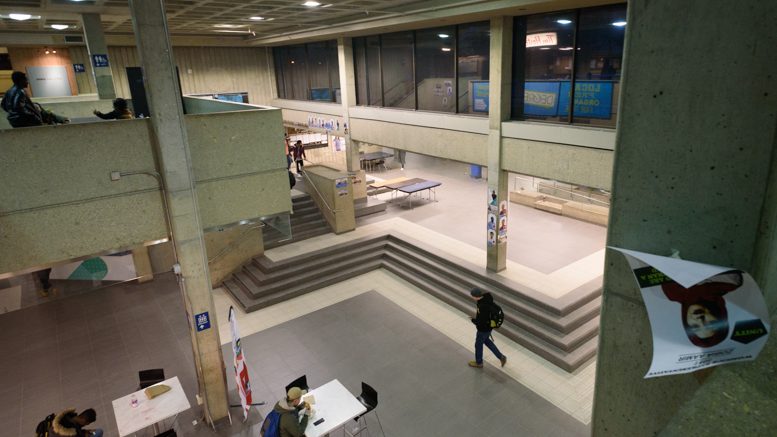Imagine a campus full of students just waiting for the opportunity to voice their opinions, express their concerns, and cast their ballots. But voter turnout is low and everyone is in despair because of a cumbersome voting processes and inaccessible polls that result in the inability to easily cast ballots.
Someone has an idea: what if students can vote online, on their phones or computers, from anywhere in the world with just a touch of a button? Perfect, just the solution we were waiting for! Online voting gets implemented in the student union’s general election for the first time ever on campus – students rush online with a newfound sense of hope in the system’s ability to accurately reflect their concerns. Our dilapidated system is pulled out of a rut of dismal voter turnout by the implementation of online voting. Except, not really.
Voter turnout in the 2017 UMSU general election was low, but it was not because of a lack of ability to vote. It was because of a lack of desire to vote. Online voting was an artificial messiah for a superficial democracy.
Hold on, voter turnout reached a record high this past election with a whopping 27.7 per cent of electorates participating. This indicates some hope, right? Not so fast. A simple examination of the last five years of voter turnout numbers contradicts any claim that online voting is a remedy for apathetic student democracy.
Take the difference between the second-highest turnout rate in the last five years and compare it with our numbers this year. In 2013, turnout was 23.7 per cent, which means that this year we saw a comparative increase of only four percentage points. 2016 saw a lull in voter turnout at 16.8 per cent of electorates, an amazing 6.9 percentage point decrease from 2013. It gets worse: compare 2013 with 2012 when voter turnout was an abysmal 7.3 per cent, and the difference between those two years is 16.4 percentage points!
Sure, voter turnout saw a 10.9 per cent increase from last year, but this fluctuation pales in comparison to the evidence apparent in the larger trends of voter turnout. At best, you could say online voting is causally inconclusive and democratically insignificant when it comes to mass engagement in student politics.
Don’t worry – we’re not alone in this struggle. Evidence from across the country where student unions implemented online voting shows similarly disappointing results. Although there appears to be an uptick in voter turnout in years closely following the initial use of online voting, the correlation only holds tenuously in the long run. Considering this, I guess we should not have expected much else for UMSU.
So why did we think online voting was the saviour of poor participation? Easy: blaming the system is easier than blaming ourselves, but blaming the electorate for poor turnout is a cowardly excuse. We, the student leaders, are all guilty for failing the students.
Every election season student leaders have the opportunity to drive the discourse of their campaign. This opportunity comes hand in hand with the responsibility to identify the issues that face students and present meaningful ways that these issues can be addressed. Voter turnout is a critical reflection of the quality of the discourse during an election combined with the candidates’ abilities to display their commitment to addressing fundamental issues.
Oscar Wilde once said: “There are two tragedies in life. The first is not getting what you want, and the other is getting it.”
We wanted online voting, and now we have it. What’s our excuse now?
Isaac Weldon is the president of the Arts Student Body Council .


